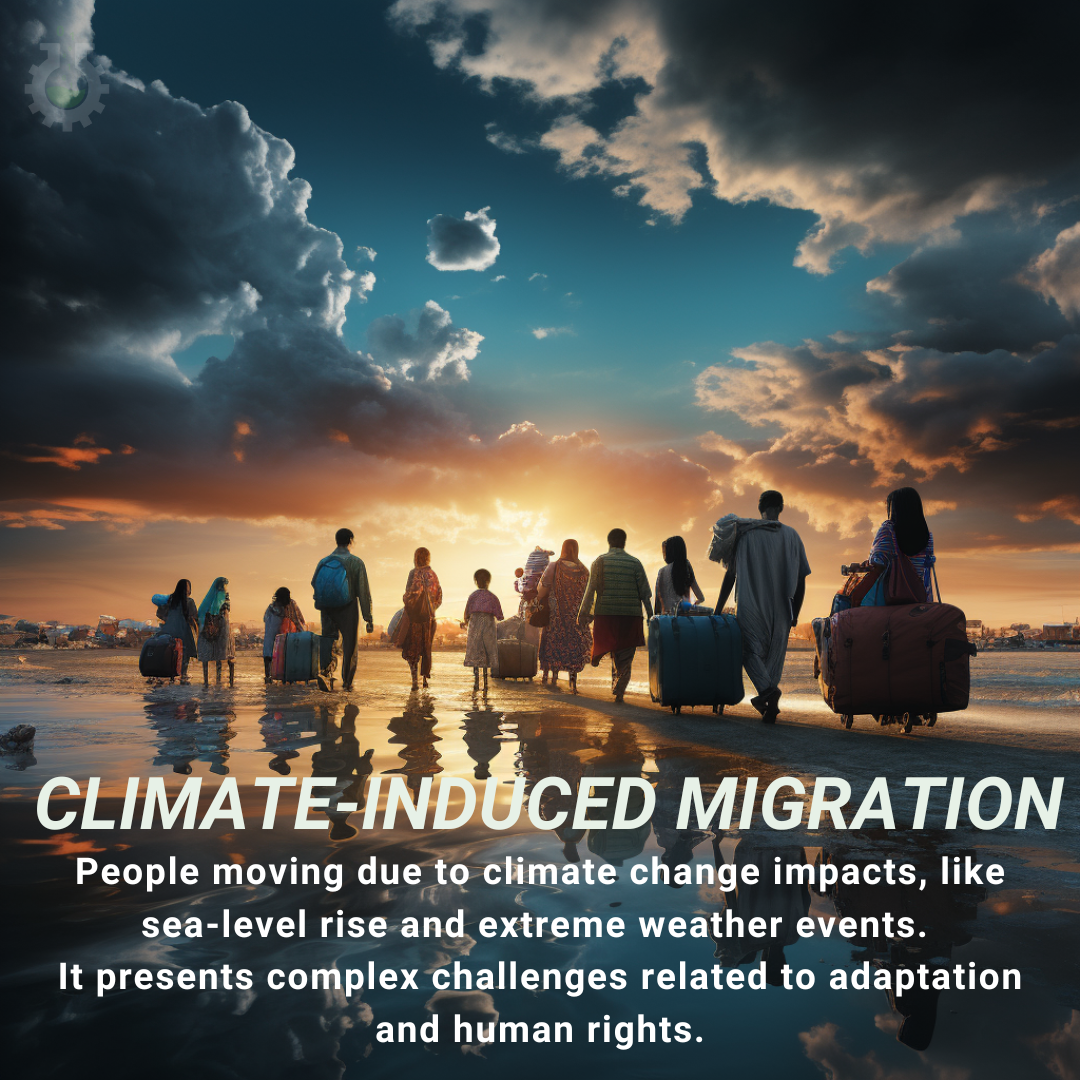October 25, 2023
Climate Change Poster Collection of the Day – Climate-Induced Migration
Book a Demo
Today’s Climate Change Poster Collection focuses on Climate-induced migration, a pressing issue that stems from the failure to reduce greenhouse gas emissions and control global temperature rise. As a consequence, we are witnessing more frequent and severe weather events and climate disasters. Unfortunately, some regions are projected to be more heavily impacted by climate change than others. Latin America, South Asia, and sub-Saharan Africa are expected to bear the brunt of these consequences, resulting in significant increases in both internal and cross-border climate migration.
Although climate migrants have certain rights under existing international human rights law, it is important to note that they do not enjoy the same level of protections as refugees. This disparity in legal status has sparked a growing argument for granting climate migrants the same rights as refugees, which would afford them expanded protections and access to legal services.
Reforming the existing framework to better safeguard climate migrants is a crucial step. One potential avenue is revising the 1951 convention or creating a new Climate Refugee Convention. However, progress on these measures is currently limited due to disagreements and the weakening of refugee protections. It is essential to prioritize the development of legal frameworks that adequately address the unique challenges faced by climate migrants.
The consequences of climate change, such as environmental degradation and extreme weather events, have triggered migration patterns worldwide. The need for action is urgent, as it is estimated that by 2050, approximately 216 million people will be compelled to migrate within their own countries due to climate change and environmental degradation. This staggering figure underscores the necessity of addressing climate migration as a critical issue on the global agenda.
Fortunately, efforts have been made to guide governments in managing climate migration. The Global Compact for Safe, Orderly, and Regular Migration was established in 2018 to provide essential guidance in this regard. This compact serves as a framework for governments to develop comprehensive strategies that prioritize the safety and well-being of climate migrants.
Climate migration is a direct consequence of our failure to mitigate greenhouse gas emissions and control global temperature rise. Regions such as Latin America, South Asia, and sub-Saharan Africa are expected to experience significant increases in climate migration. While climate migrants have certain rights under existing international human rights law, they lack the same level of protections as refugees. There is a growing argument for granting climate migrants the same legal status as refugees, which would afford them expanded protections and access to legal services. Reforming the existing frameworks and developing new conventions are potential avenues to better protect climate migrants. The urgency of the issue is highlighted by the projected number of people forced to migrate within their own countries due to climate change and environmental degradation. Efforts such as the Global Compact for Safe, Orderly, and Regular Migration provide guidance to governments in managing climate migration. It is imperative that we address climate migration as a critical global issue and take immediate action to protect and support those affected by it.
Discover an inspiring collection of climate change poster.



